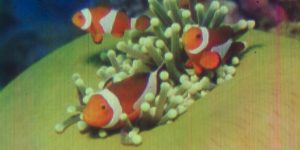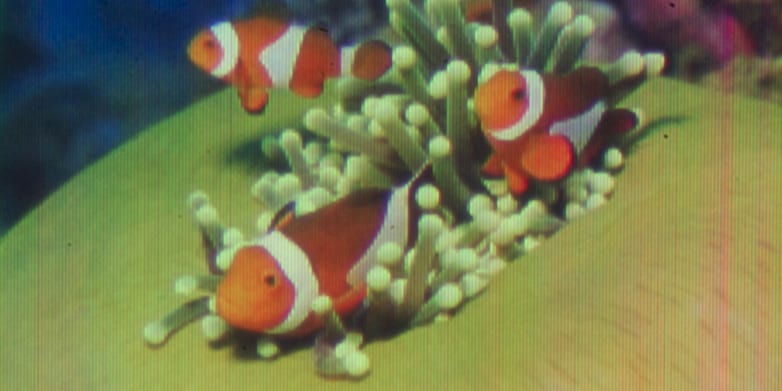
The tiniest inkjet color picture of the world is as small as the cross-sectional area of a human hair (Photograph: Scrona/ETH Zurich)
Scrona Ltd. and the ETH Zurich have been announced official world record holders for the smallest inkjet-printed colour image. The Guinness World Records Limited achievement involved the use of the groundbreaking 3D NanoDrip printing technology, invented at ETH Zurich and now commercialized by the ETH spin-off company Scrona.
The printed image measures a minuscule 0.0092 mm2 in area, or 80 µm x 115 µm. That is about the cross-sectional area of a human hair. Being so small, the image is totally invisible to the naked eye. To see it, the official witnesses had to use a special microscope.
The printed image represents a scenery of clown fishes around sea anemones. Thanks to 24 bit color depth in the printout the picturesque scene that depicts their home appears almost as colorful as in reality.
What makes the image appear so lively is the result of so-called quantum-dots (QDs). QDs are nanoparticles that emit light of a very specific color. By tuning their size, this color can be freely engineered, for example from orange to yellow. QDs are known to be very intense in their color appearance, a reason why they currently make a strong debut in flat panel displays.
To create the clown fishes and their cozy sea anemone homes, layers of red, green and blue quantum dots were printed at a resolution of 25,000 dpi, i.e. at an inter-pixel distance of 500 nanometers. To define the 24bit color space the thickness of the deposited quantum dot layers had to be controlled with incredible sub-nanometer precision, at each pixel location.
Until now, even with cutting-edge semiconductor technology, it was not possible to handle these nanostructured materials with the accuracy that is demonstrated by this world record. It highlights new avenues towards the use of nanostructured materials in future electronics and optics, particularly in the display sector.
Recently, Scrona presented their interesting idea of “µPeek – The Professional Microscope that Fits in Your Wallet” on the crowdfunding plattform Kickstarter.

















